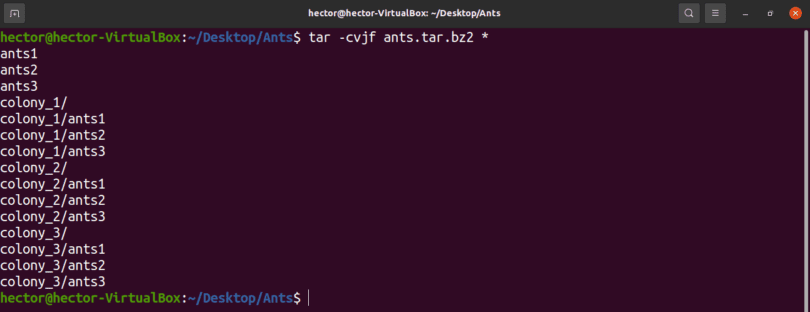

Wildcards are typically either an asterisk (*), which represents one or more characters or question mark (?),which represents a single character.ġ4. Output : -rwxrwxrwx root/root 191 02:20 os2.cĪlternatively referred to as a ‘wild character’ or ‘wildcard character’, a wildcard is a symbol used to replace or represent one or more characters.
#Untar to folder archive#
Viewing the Archive using option -tvf $ tar tvf file.tar We can pass a file name as an argument to search a tarfile : This command views the archived files along with their details. $ tar tvf file.tar | grep " filename.file extension"ġ2. $ tar tvf file.tar | grep " text to find" Applying pipe to through ‘grep command’ to find what we are looking for : This command will list only for the mentioned text or image in grep from archived file. We can also list for specific content in a tarfile $ tar tf file.tarġ1. list the contents and specify the tarfile using option -tf : This command will list the entire list of archived file.
#Untar to folder update#
Update existing tar file in Linux $ tar rvf file.tar *.cġ0. Check size of existing tar, tar.gz, tar.tbz file in Linux : The above command will display the size of archive file in Kilobytes(KB). For example the above command will extract “fileA” “fileB” from the archive files. tar.tbz file in Linux : This command will extract or untar multiple files from the tar, tar.gz and tar.bz2 archive file. $ tar xvfj file.tar -C path of file in directoryħ.

Untar single tar file or specified directory in Linux : This command will Untar a file in current directory or in a specified directory using -C option. rwxrwxrwx root/root 94 02:47 example.cppĦ. Both compress and decompress takes more time then gzip. Creating compressed tar archive file in Linux using option -j : This command compresses and creates archive file less than the size of the gzip. Extracting a gzip tar Archive *.tar.gz using option -xvzf : This command extracts files from tar archived files. gzip compression on the tar Archive, using option -z : This command creates a tar file called which is the Archive of. Extracting files from Archive using option -xvf : This command extracts files from Archives. Creating an uncompressed tar Archive using option -cvf : This command creates a tar file called file.tar which is the Archive of all. Archive files are used to collect multiple data files together into a single file for easier portability and storage, or simply to compress files to use less storage space.ġ. tar fileĪn Archive file is a file that is composed of one or more files along with metadata. r : update or add file or directory in already existed. z : zip, tells tar command that creates tar file using gzip u : archives and adds to an existing archive file t : displays or lists files in archived file

GATE CS Original Papers and Official Keys.


 0 kommentar(er)
0 kommentar(er)
